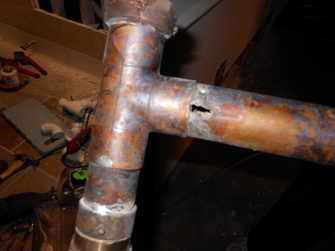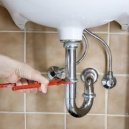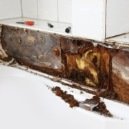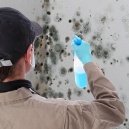Find a pre-screened local mold removal specialist Free Estimate
Find a Mold Specialist Now
Click or Call, Toll-Free 24/7
Causes of Mold
Understanding common causes of mold in the home allows you to take steps to prevent the development of a potentially serious household mold problem. Knowing what causes mold also allows you to prevent a mold problem from recurring if you’ve already dealt with the effort and expense of cleaning up household mold. If you don’t address the cause of the problem, the mold will likely return and you’ll be faced with removing and cleaning it up all over again.
Causes of Mold in Homes
There are many different events that can cause a household mold problem. Typically the one thing that causes mold growth involves an unwanted or uncontrolled moisture presence in the home, since all types of mold require moisture in order to grow and spread.
Conditions that are often causes of mold in a household include:
- Flooding – an important thing to remember about floods is that a flood house occurs when water travels across the surface of the ground to enter a home. If you experience a water loss in your home, do not mention the word "flood" or "flooded" to an insurance adjuster. Flooding is usually NOT covered by a standard homeowner insurance policy.
- A leaky roof – about 60 percent of all insurance claims result from a problem with the roof.
- Leaky window frames.
- Leaving windows open when it rains.
- Leaky or broken pipes – as plumbing pipes age, especially copper water supply lines and cast iron sewer lines, they tend to develop holes or cracks.
- Leaky sinks, tubs or toilets – seals give out, fittings become loose, supply lines break.
- Leaky washing machines or dishwashers – washing machine water supply lines are notorious for rupturing, especially the hot water line.
- Poorly ventilated bathrooms and laundry rooms - simply turning on the exhaust fans or opening a window can help with this issue.
- Wet clothes left in a pile or wet clothes that are hung to dry can cause an unwanted increase in a room’s humidity level.
- Damp basements
- High levels of relative humidity in the home (greater than 50 percent).
- House fires - mold is actually a result of the wet materials left behind after water is used to put out the fire, not by the fire itself.
- Condensation on cool surfaces such as a concrete floor or cold metal pipes.
- HVAC system condensation problems, such as having a whole-house humidifier set too high or water entering the duct work.
- Any type of significant water damage in the home.
To prevent mold from developing in the home, correct any of these conditions as soon as possible. That means repairing any leaks promptly. Clean up any water spills promptly, as well. If you have high levels of relative humidity in your home, or if your basement is damp, you can purchase a dehumidifier to reduce the amount of moisture in the air.
The above things aren’t the only possible causes of mold and sometimes even the best preventative steps don’t keep household mold from developing. If you notice signs of a mold problem in your home, take steps to address it immediately. Mold is found everywhere in nature. It is already present in your home, it is just under control and not reproducing large colonies. Mold loves warm temperatures and moisture. Keeping moisture under control is the best way to prevent mold growth. Most types of mold grow and spread rapidly, so every day you delay just allows the problem to get worse.
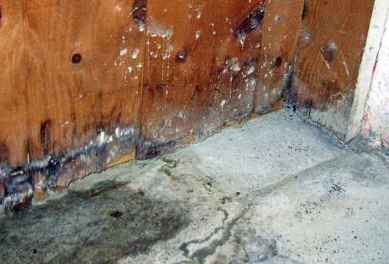 Mold on basement floor and wall
Mold on basement floor and wallTesting for Mold
If you aren’t sure if you have mold in your home or not, you can have a professional come in and test for mold. The types of tests can include air and surface sampling. Air sampling is capturing particles floating in the air, determining their concentrations, and then comparing the inside concentrations to what is present in the outside air. When conducting surface testing, a piece of tape is pressed down on a household surface, trapping any mold spores, or a swab is used in order to see what types and the numbers of spores that are present. This is a good idea after a flood, fire or other event involving significant water damage to the home. If you smell a musty odor in your home, you probably have mold somewhere even if you can’t see it.
There are DIY mold test kits on the market, but if you are serious about a mold problem, these kits might not be the way to go. The first problem with a DIY kit is there really is no “inspection”. The kit will contain a petri dish that you place in an area where you think a mold problem exists. After a few days you pick the dish back up and ship it to a lab. These kits will almost always indicate a presence of mold, but the results are probably meaningless since mold is everywhere to begin with. Many times the kit you buy will already be contaminated from just sitting around on the shelf, waiting for someone to buy it. Also, mold kits provide no baseline to compare the results to. Is the amount of mold spores inconsistent with what is normal? You have no way of knowing for sure.
You should always have a professional come in and test for mold. If a problem exists, by catching mold early, you can prevent a problem from getting out of control. Follow this link to find certified mold testers in your area.
For Help Find the Causes of Mold in Your Home
If you’ve got a mold problem in your home and aren’t sure what caused it or how to prevent a problem from recurring in the future, we recommend consulting with a mold remediation professional. A trained and experienced professional will visit your home, inspect the areas affected by mold, explain the conditions necessary to remedy the problem, and advise you on what you can do to prevent future problems. Many mold remediation professionals offer free in-home consultations, so you have nothing to lose by making an appointment. Even if you want to take care of cleaning up a mold problem yourself, you can benefit from some professional advice about the mold’s removal and how to prevent future problems. To find professionals offering free in-home consultations in your area, just follow the link.
Return From Causes Of Mold To Our What To Do About Mold Page
Free Home Inspection By A Mold Removal Specialist
Search This Website
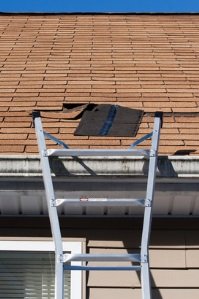 A damaged or leaky roof can cause mold
A damaged or leaky roof can cause moldRecent Articles
-
See Our 5 Recommended Mold Removal Companies in Covington, KY
Apr 16, 25 12:59 PM
-
See Our 5 Recommended Mold Removal Companies in Wheaton, IL
Jun 20, 24 10:33 AM
-
See Our 5 Recommended Mold Removal Companies in Aberdeen, SD
Oct 08, 21 04:05 PM
